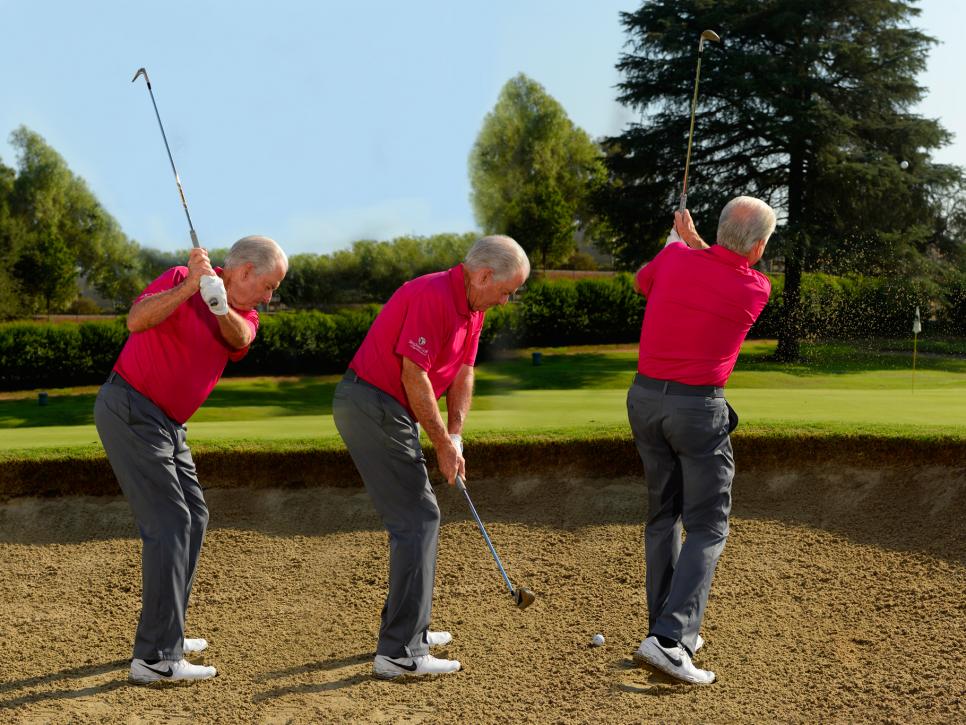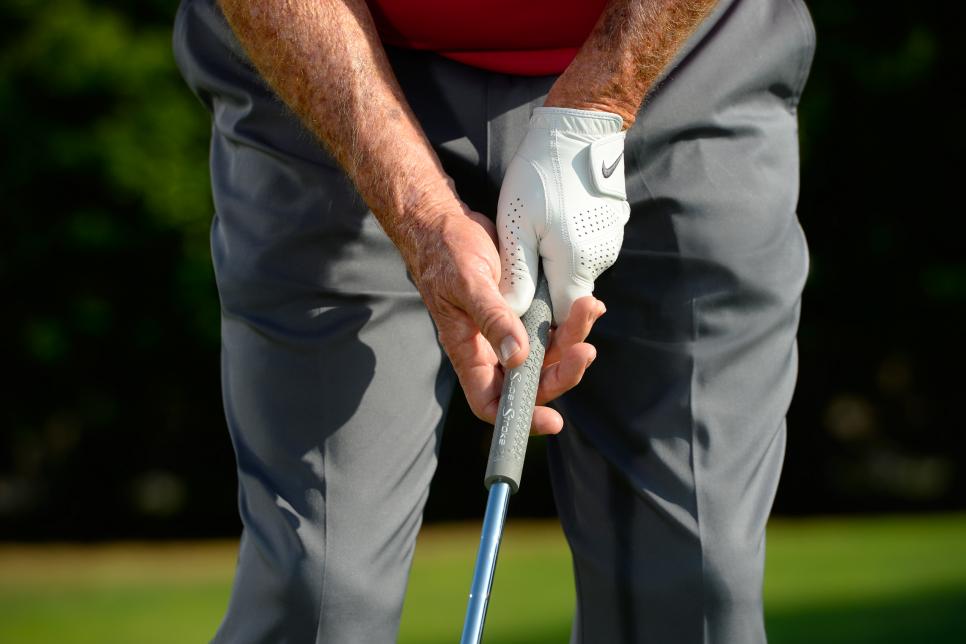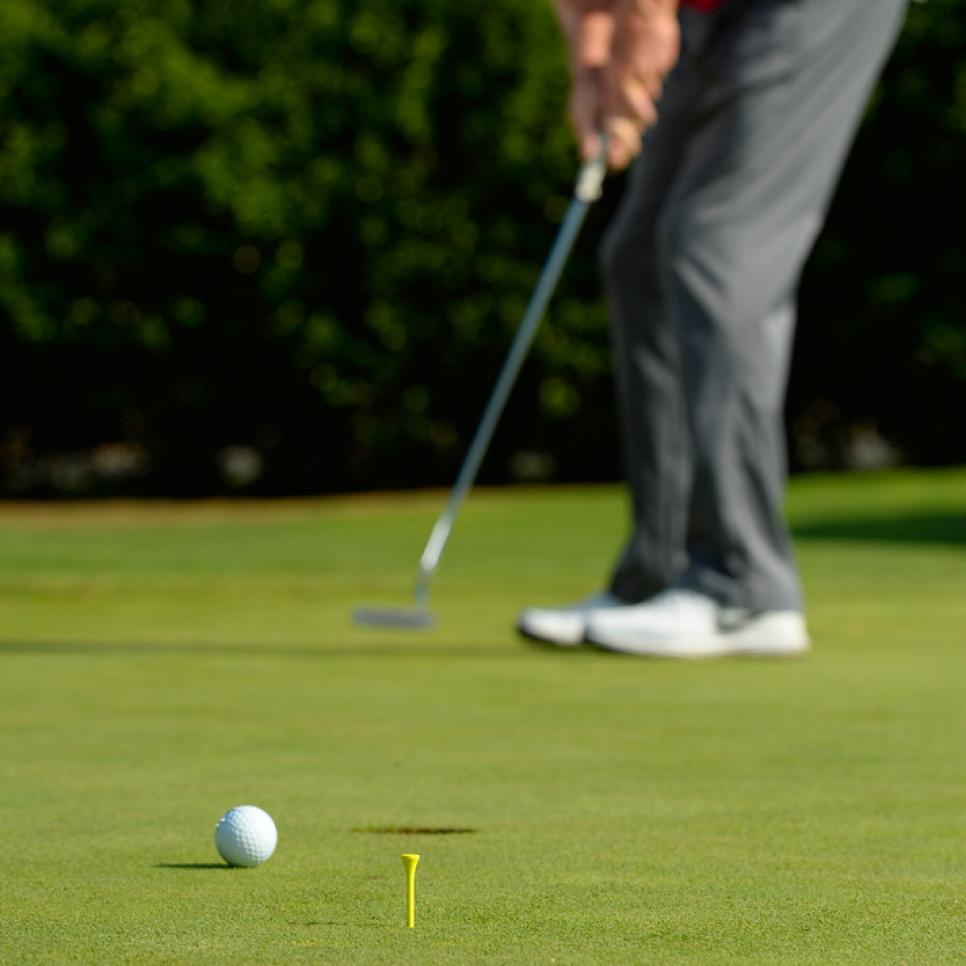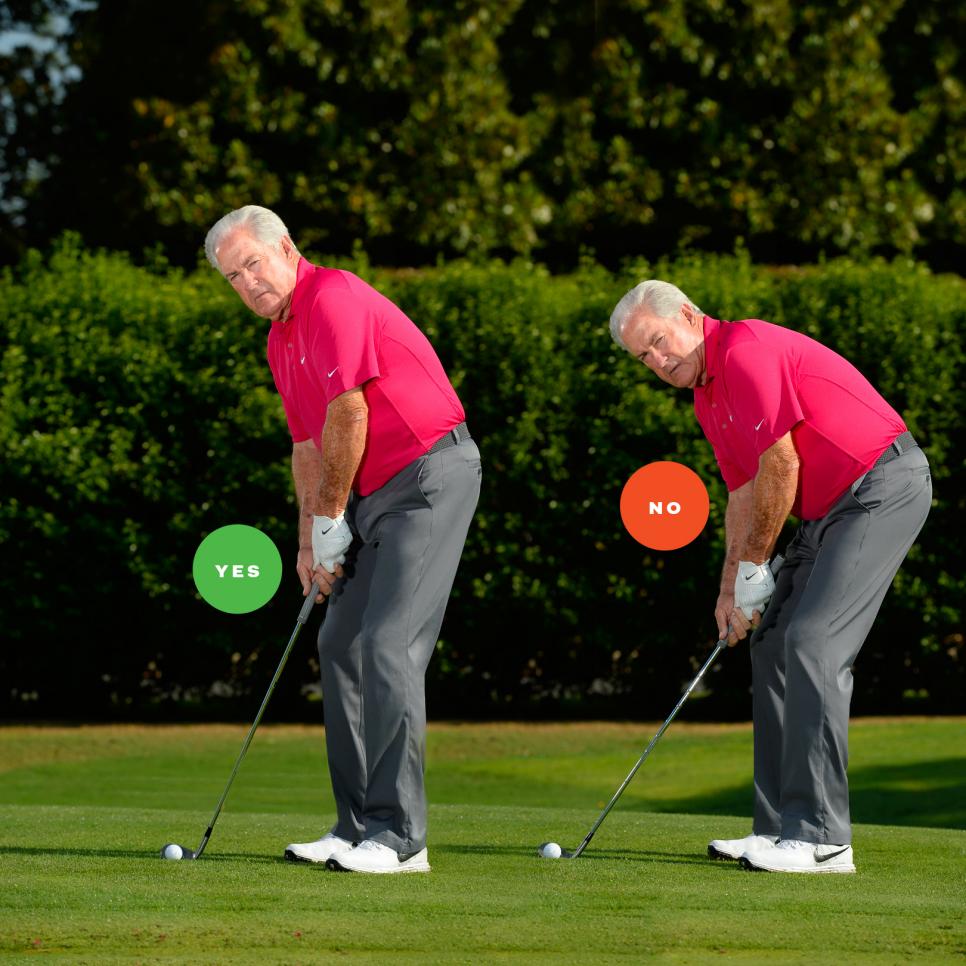You aren't always going to have your best game off the tee or into the green. Even tour players struggle sometimes. But short-game skill can turn bogeys (or worse) into pars. Feeling good about your play around the greens spreads confidence throughout your bag. Targets get a little bigger; hazards look less menacing.
What's better than halving a hole against your buddy after he hits the green in regulation, and then you knock it stiff from a greenside bunker?
Nothing. Trust me.
Learn the art of saving par.

1.) SAND PLAY
Make a big enough swing in the bunker
Greenside bunkers present a problem for players who feel they need to make a fast, short swing to get the ball out, but not hit it too far. What you should do is set up with the clubface open and make a big enough backswing so that it doesn't feel like you have to swing super fast through the sand. Make a swing as if it were a normal pitch shot outside the bunker. The goal is to hit behind the ball in the sand and keep swinging to a full, high finish.

2.) BREAKING PUTTS
Get the lowdown on the read
To get a complete, accurate read, you want to be in a position where you can see green contours the most clearly. When you have a putt with noticeable break, start with a look from behind the ball, but then move to the low side of that break—opposite from the apex—and complete your read. Visualize your line to the hole, pick the spot on the edge of the cup where you want the ball to enter, step in and roll your ball with that information fresh in your mind.
‘Always read your putts from the low side of the break.’

3.) PITCH SHOTS
Loosen your lead hand to loft the ball
When you need to hit a higher shot near the green, resist the urge to squeeze the grip too hard and make a fast swing. The results are rarely good. Instead, keep your right hand very soft on the grip throughout a controlled swing. You can open the face a bit at address to add loft to the shot, but keeping the right hand relaxed is priority one. The other factor to executing this shot is to let the right hand pass under the left through impact. It will feel like the left hand stops moving. This allows the clubhead to slide through the turf and pop the ball up.

4.) DISTANCE CONTROL
Regulate rollout with a tee
I watch a lot of my amateur friends ram some 10-footers in and leave the practice green happy. That's nice, but it doesn't teach you anything about the importance of speed control—a big deal when you're trying to avoid a three-putt.
What's ideal speed on the green? The ball should get to the cup and roll no more than 18 inches past it if you miss. You can build feel for this speed by sticking a tee in the ground on a practice green about 18 inches beyond the hole. Hit putts from various distances that roll no farther than the tee.

5.) CHIPPING GAME
Stand up to greenside shots
For a basic chip shot, you want the club to make consistent contact with the ground in a position that's just in front of the ball. The easiest way to make that happen is to start with nice, tall posture, with your toes angled toward your target (above left). As the round progresses and you get a little tired and careless, the tendency is to slump your back and set up too square with your body and feet (above right). This forces you to straighten up through impact, which costs you that repeatable contact. If you maintain good posture, you'll hit crisper chips that set up easy par-saving putts.
Dave Stockton, a Golf Digest 50 Best Teacher and two-time PGA Championship winner, teaches at Redlands Country Club in California.